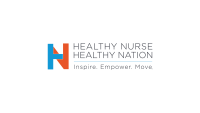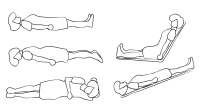To address the nursing shortage, we must take this crucial step.
In a 2022 Viewpoint, I highlighted actions to address the nursing workforce shortage. In that article, I said, “Nothing will change until healthcare policy identifies the economic value of nurses in a way that truly affects change to healthcare reimbursement.” I still believe this, but the current care delivery system, especially in the acute care hospital setting, also must be addressed.
Tackling the nursing shortage to achieve sustainable positive change requires reworking the current system of care. Without this step, the many actions put into place by nurse leaders and others will fall short of long-term gains. Why? Because taking steps to address the nursing shortage without solving why nurses leave the bedside will contribute to a vicious cycle of well-intended actions without substantive impact.
Attempting to change delivery of care is no easy task. In addition to clinicians, many stakeholders—such as payer sources, governmental and regulatory bodies, suppliers, and information technology—also must sit at the table. Nurses, especially, must have a voice because nursing comprises the largest segment of the workforce within any hospital’s budget. Remember, providers admit patients to a hospital for nursing care and technology that can’t be provided in any other setting.
Retaining nurses to mitigate shortages
Nurse turnover: Understand it, reduce it
Not having enough nurses at the bedside compromises patient safety and quality outcomes. Staffing remains paramount to patient safety, ensuring quality outcomes, as does the retention of nurses, but not at the expense of mandatory ratios, which more than likely will affect the level of assistive personnel and other necessary disciplines. A hospital’s budget and operating revenue can do only so much without balancing elsewhere. In other words, we must find a way to provide safe, patient-centered care cost-effectively.
Make no mistake, I believe in safe evidence-based staffing where nurses at the front line participate in staffing decisions based on patient acuity, flexible demand, workflow, and other available resources. For these reasons, nurses must take part in designing solutions that support rather than hinder care. How many times have you heard about the burden of documentation? Usually these complaints result from poorly designed electronic health record systems that don’t support clinical workflow or involve the end user in the design.
Critics say it’s unrealistic to consider changing delivery of care because of the problem’s complexity and the reimbursement system’s esoteric nature. But think about this: Out of necessity, hospitals have begun recycling former models of care, such as the return of licensed practical nurses for team-based care; creating new assistive personnel roles; and expanding the scope of work for unlicensed caregiver roles to support top of license practice. These actions, and a long list of others, aim to improve the work environment and retain nurses. Or do we continue the ebb and flow of turnover with unending temporary recruitment and retention activities that fail to resolve the overarching problem of how we deliver care?
Until we address an imperfect system of care, actions to stave off the nursing shortage won’t be enough regardless of the economic value of nurses. I say this with a profound respect for the nursing profession. My passion for nursing excellence will never be diminished. It will take courage, strength, and perseverance to challenge the current conventional system of care.
Evelyn M. Olenick, a member of the American Nurse Journal editorial board, is the former senior vice president and chief nursing officer at Phoebe Putney Memorial Hospital in Albany, Georgia.
American Nurse Journal. 2024; 19(7). Doi: 10.51256/ANJ072444



















1 Comment. Leave new
Well written and thought provoking article!